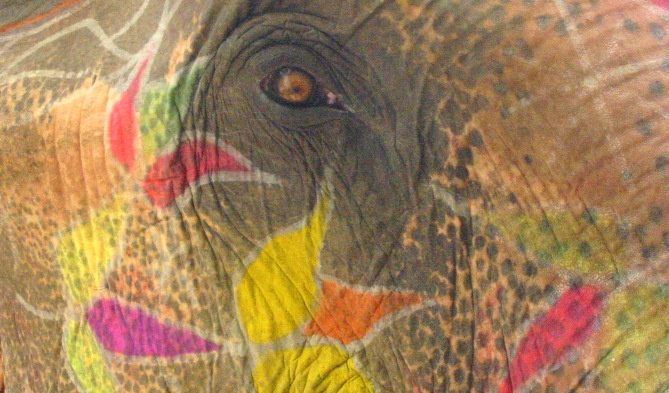
(“Sending and receiving” in Tibetan)
I. Resting back.
Relaxing into the back of the body, connect with the natural generosity of the out-breath, and the natural receptivity of the in-breath.
With the out-breath, feel how the body--by itself--simply lets go of what is not needed. Thoughts and beliefs about what we are can also be allowed to fall out with the out-breath. Tensions and plans and memories can just flow out.
With the in-breath, notice how aliveness pours in.
Notice that the breath happens by itself, and let yourself rest “back” and enjoy.
II. Expansive presence.
We can start to feel for a more spacious sense of presence by tuning into the space at the end of the out-breath, or by feeling the space around the body as we let the body breathe.
Enjoying the softness of the breathing can also help us begin to erase our strong sense that our skin is our boundary, that we are contained within the skin.
We can feel or imagine that we are as vast as the night sky. The breath, the mind, and the body are just some of the sparkling things happening within gentle spaciousness.
There is enough room for everything, even those secret corners of the heart.
There is enough room for us to be ourselves.
The night sky is the background for the next steps of the meditation and we can come back to it whenever we like.
III. Feeling what is important.
We are allowed to ask ourselves, “What is important? What are these cells here for? What makes life worth living?”
We can throw the question into the gap after the out-breath, and just wait for a natural response, as the in-breath answers the out-breath. Or we can just ask the deepest place we know in ourselves.
We do not need an answer in words, although sometimes our own genuine words may help us connect with what is important in this life.
If we cannot feel very vividly the texture and flavor of what is important, then we may remember a time we experienced clarity, freedom, joy, feeling at home or loved, or a deep happiness for no reason. Let the memory be as vivid as possible, as we remember sounds, temperature, posture, etc.
Once we can feel what Pema Chodron calls the “texture” of the experience, we can let go of the images and details of memory, and just stay with the vivid texture.
Getting to know the texture, notice if it is grounded or uplifting; fluid or still; embracing or expansive, or all of that.
Then let yourself swim in that texture—let the cells say “yes” to it and drink it into every corner of your being.
Breathing in, connect to the texture in a very alive way. Breathing out, fill and (eventually) overflow with that texture.
IV. Feeling what is difficult.
Resting back again into the “night sky,” drop the previous exercise for a while. Then think of a moment of difficulty in your own or someone else’s life—not an overwhelming difficulty but something that moves your heart, something you can feel. Again, choose something specific and clear, and tune into the texture: burning? spiky? accelerated? stuck? heavy? sharp? dense? dark?
Normally we resist feeling the fever of self-doubt or the weight of loneliness, and we can include the resistance with the difficulty.
Then we simply welcome the “texture of the difficult” into night sky on the in-breath. Finally, no need to fix or explain or hide or fight. There just happens to be enough room in night sky for this pain to be.
V. Sending and receiving.
Remembering night sky, we continue to let the inhalation bring us into intimacy with the texture of the difficult. On the out-breath, we can now also re-connect with the texture of what we love in life, the texture of what is important.
And we can let the out-breath fill us and overflow. If we are focusing on a specific person other than ourselves, we can direct the silkiness (or whatever texture) towards that person.
VI. Playing with questions.
We can question whether there is enough silkiness to go around. Where does it come from? To whom does it belong? Is it my secret? Is this what everyone and everything else is also living or looking for?
We can also question the deep, dark secrets we human beings think we live with. Is anyone alone in feeling loneliness or any other difficulty? Is there anyone else in the room (or country) who may have felt that same difficulty? Is there anyone who has never felt it? How many thousands of people may be feeling rage or panic or shame just now on the planet?
Is it mine or hers or his, this desperation or anxiety? To whom does it belong?
Where does it get its energy from?
VII. Widening the flow.
Why not?
We can expand our view. We can let the in-breath welcome the difficult texture we all share. There is enough space in spaciousness. And we can let the out-breath share what is most precious to us. The more we give the more we find.
VIII. Uncovering the treasure.
It can take some days or weeks to get into a rhythm with this practice. As we get more familiar with this technique of reversal—of stopping our usual running away from the difficult and burying the light--we may find that it helps us uncover a natural, uncontrived circle of transforming generosity.
